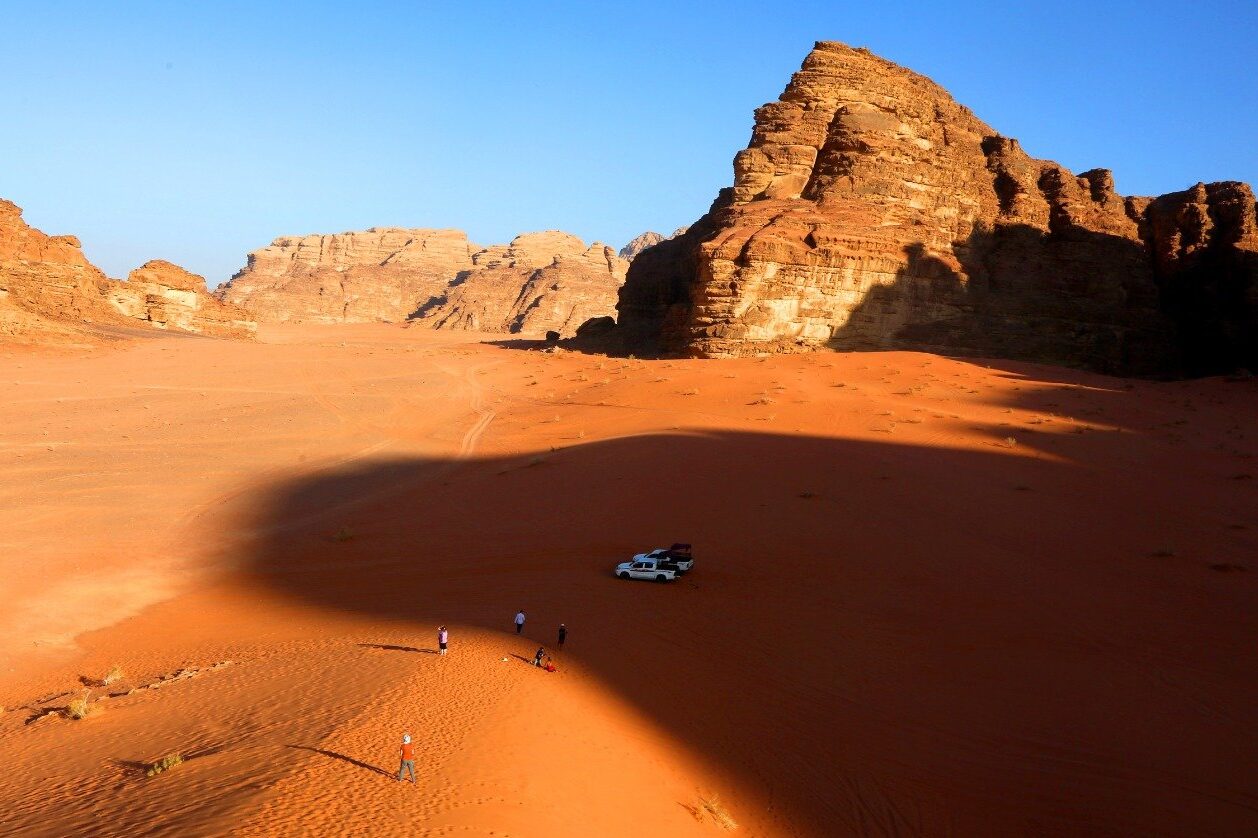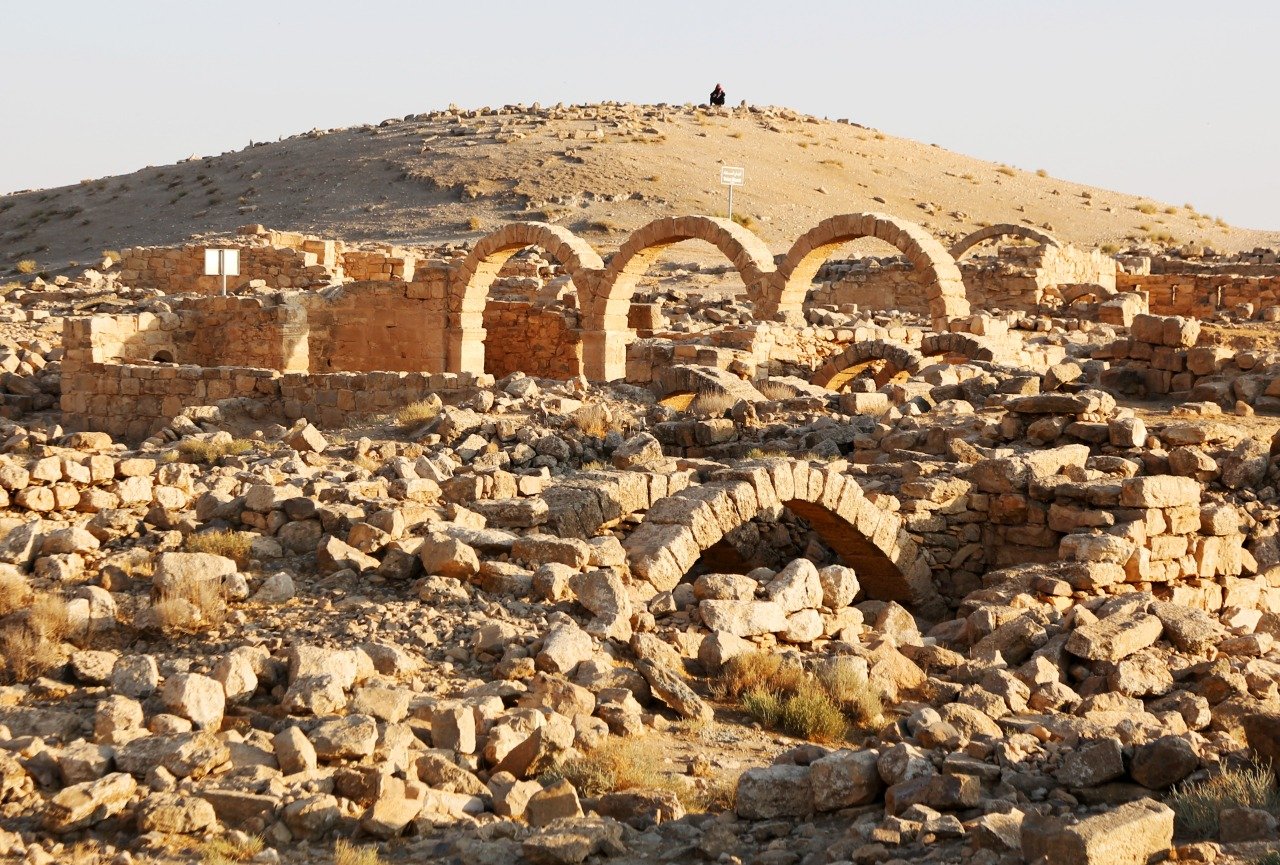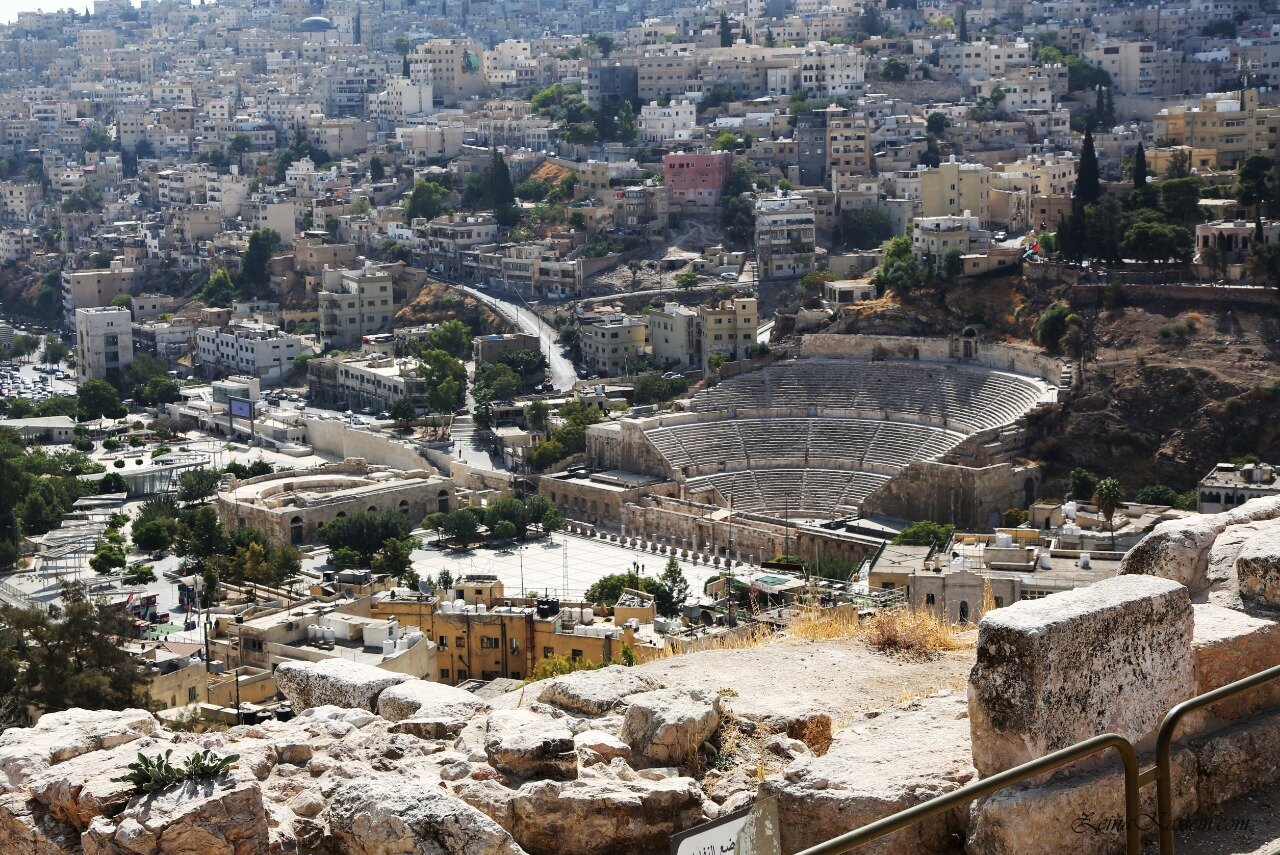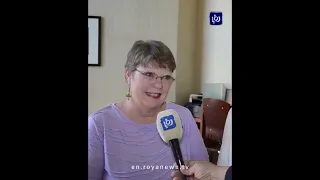
It is hard to describe the surreal beauty of a desert. My preconceived notions of a desert landscape are dominated by the word barren. That word is not used to describe Wadi Rum. Other worldly? Awe inspiring? Majestic? Gorgeous? All those words work.

Explore Jordan's hidden treasures in this captivating series. From the Roman ruins of Jerash to Mount Nebo, each location has its own enchanting story. Immerse yourself in Madaba's culture and culinary delights. Discover Um Ar Rasas and engage with friendly Bedouin people. And don't forget Petra, Jordan's crown jewel. Get ready for an unforgettable adventure.

I recently had the opportunity to visit the country of Jordan, officially known as The Hashemite Kingdom of Jordan, with a group of fellow travel advisors.

Home > Readers Corner > Petra-Interesting Facts PETRA – INTERESTING FACTS The Crown Jewel of attractions and sites in Jordan, Petra is the mysterious ancient city that was hidden through modern history until being rediscovered by John Lewis Burckhardt back in 1812. The city was lost for so many years because the Bedouins kept it as a secret for them and they used the city as a living area during the winter time and they stayed until 1984 when Petra was announced as a world Heritage site by the UNISCO. The beautiful nature of life in Petra, and the Arabian Bedouin culture, attracted many travelers to stay and live in Petra. And even marry a Bedouin and start a family there. One of the most famous examples is the New Zealander author Marguerite van Geldermalsen who lived with her Bedouin husband Mr Mohammad Abdullah in his Bedouin cave in Petra and then wrote a book about it (Married to a Bedouin). Petra is vast, the city spreads over 264 Kilometers, however, this remains only 20 percent of the city, as most of Petra is still underground yet to be discovered. Excavations has been reestablished back in 2004 with slow process to maintain the authenticity of the city. Some of the newly found sites in Petra is the tombs under the treasury. It is worth to mention that the excavation have reached the original ground level during the Nabatean period in some places, astonishingly they had to dig for around 7 meters deep. The Treasury, which is the first site you see after the end of the Siq (Path to Petra) had its name from the Bedouins, as it was believed that there was a treasure hidden in the Jar at the top of the Treasury. These days you can see bullet holes in the Siq as you walk by before reaching the treasury. There are different theories about the treasury and the reason for it, but most of archeologists suggest that it was a temple and a royal tomb for King Aretas VI. Unless excavations reveal new leads. But lets not forget the people who built the city, the Arab Nabateans, the most famous fact about them is that they were traders, however, the Nabateans also pioneered in engineering and agriculture. One of the best examples on their brilliance in engineering was not only the carved city itself but the intelligent water system and channels throughout the city. Where water channels start from the top of Wadi Mousa (Moses springs) stretching around 10 kilometers to reach Petra, with water channels throughout the Siq to the end of the city where they had tanks carved in stone to preserve water. Another example on their brilliance in engineering is that most of the city doesn’t get wet when it rains! Because when they carved the façade it was carved inside the mountain leaving some rocky overhangs to protect the buildings from the rain. And in other cases there were water channels carved on the top of the façade to redirect rain water to prevent water damage the rocks. As for agriculture, Nabateans managed to make use of the land in between Petra and Beidha (little Petra, which is another Nabatean site) to reach self-sufficiency in agriculture despite the harsh nature of the area by carving water channels and tanks to gather rain water! Only if modern day cities were built like this! More Readings THE MAGICAL KINGDOM OF JORDAN: PART 4 THE MAGICAL KINGDOM OF JORDAN: PART 2 THE MAGICAL KINGDOM OF JORDAN: PART 1 PETRA – INTERESTING FACTS Home > Readers Corner > Petra-Interesting Facts

Home > Readers Corner > The Magical Kingdom of Jordan Part III THE MAGICAL KINGDOM OF JORDAN – PART III Photo Credit : Zeina Kassem Petra Petra is considered the crown jewel of Jordan, the most visited site in the country. And for good reason. Petra is what drew me to Jordan initially as it has for so many others. I don’t remember how many years ago I came across a photo or an article on Petra and was absolutely fascinated. I mean, an entire city carved into rocks???? Really? And not just an entire city of caves and rough living spaces but a beautiful, expertly carved city. Columns and angels and flowers and everything carved into canyon walls long before any modern day tools were invented. Wow! Maybe it was the feature in “Indiana Jones and the Last Crusade”, maybe not, but I am happy I stumbled across this place and that it took a spot on my list of places I wanted to visit. Current day social media has distilled Petra down to the Treasury, pictured above. If you were to search #petra on Instagram most of what you would see is a similar photo to the one above from many different angles. But Petra is so, so much more. Petra is an experience. A full on, mind blowing experience. One that should be on every bucket list out there. This trip was full of emotional moments for our entire group. Moments that took our breath away and brought us to tears. Jordan has a way of doing that. Petra was my moment. Petra is thought to be about 10,000-years old. It was built by the Nabatean Empire, made wealthy through trade on the Spice route. One can still imagine caravans walking the same route we did. You start the journey at the visitor center. There is a modern museum (we did not have time to visit but I have heard great things), visitor information, and stalls of souvenirs run by the local Bdoul Bedouin tribe. From there, you walk for about a mile, all on a gently descending path, passing many tombs and monuments along the way. The most striking of these is the Obelisk Tomb, pictured above, with an oblelisk on top representing each one of the people buried there. It is thought that the lower level was a banquet hall where the families would gather every year to show respect and celebrate the lives of their loved ones. Photo Credit : Zeina Kassem After strolling on the open road, you enter the siq, the word for canyon in Arabic. The siq is a natural split in the rock with walls soaring up to 200 feet on both sides. You get a sense of perspective from the photo above. The rocks are a gorgeous red color that changes depending on how the light hits them. They will be one color looking forward and a different color when you glance back. The walls are full of sculptures and niches where you can see the centuries of worldwide influence on the Nabatean culture. There is a small, unmarked remnant of the original gate still left. The ground is a mix of centuries old cobblestones and dirt path. Some places are very narrow, providing natural protection for the city from invading armies. It is such a cool experience to walk this path. You can imagine the long line of camels and human feet that walked these same cobblestones back when this was a center of trade. You might read about the crazy carriages driven by the bedouins on this trail but rest assured they are gone. During the pandemic, they were replaced with golf carts who actually pay attention to the people walking. There is such a sense of anticipation as you walk this route. You know something fabulous is up ahead but you simply can’t see it. Until you do … Photo Credit : Beth Rowan The first glimpse of the Treasury took my breath away. A friend captured my face in a photo that was posted to social media. This was one of those moments for me. Partly expectation, partly overwhelm, this was quite the emotional experience for me. It was more beautiful than anything I could have imagined. Though I am not happy that social media has distilled Petra down to the Treasury, I do understand the reasoning. It is overwhelmingly stunning in its beauty and craftsmanship. Historians believe the Treasury was one of the last buildings created in Petra because of the advanced techniques used. But no one really knows what it was built for. A tomb? A Place to keep papers and records? That history is lost to us. The Bedouins believed it was built to hold the King’s treasure. When it was excavated and no treasure was found, they proceeded to shoot bullets at a statue of a woman on it’s exterior. If you look closely, you can see the many pockmarks to attest to the tale. You can not go inside the Treasury. To preserve the building, no one is allowed to enter. I did not need to. I just wanted to sit and stare for hours. No movie can ever capture the true beauty of this structure. The scene in front of the Treasury is a little crazy at moments. There are stalls selling refreshments and souvenirs, Bedouins with camels hawking rides, and others trying to get you to climb to the top of the rock opposite. We declined as the trip is longer than they promise, rather dangerous in spots, and entirely illegal. Though the photos are all over Instagram from that spot, we considered it disrespectful to climb an illegal path for a social media post. Photo Credit : Zeina Kassem From the Treasury, there is loads more to explore. You pass through the Street of Facades, featuring what looks like tall buildings all in a row. From there, there are a series of many tombs on...

Home > Readers Corner > FAM trip for travel advisors from the USA & Canada covered by Ro’ya TV and Zeina Kassem Photography FAM trip for travel advisors from the USA & Canada covered by Ro’ya TV and Zeina Kassem Photography The best thing about what we do is the people we meet. This started as a business trip for destination familiarization for travel advisors from the USA and Canada, and ended up with friendships that will last forever! The chemistry in the group even caught local news attention and our partners are now celebrities! Thank you Ro’ya TV – Zeina Kassem Photography for the wonderful work!https://youtu.be/65RZN3WypKA?si=wVLal85oPeQgbCrw Home > Readers Corner > FAM trip for travel advisors from the USA & Canada covered by Ro’ya TV and Zeina Kassem Photography







